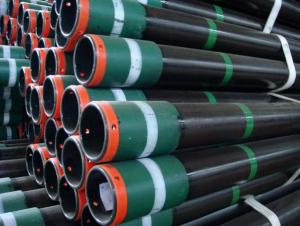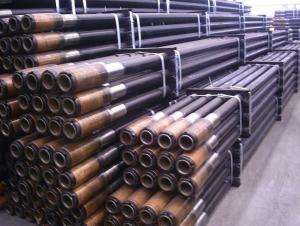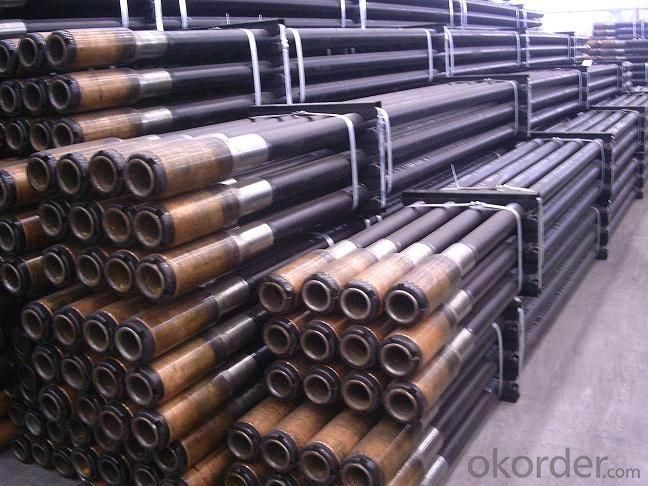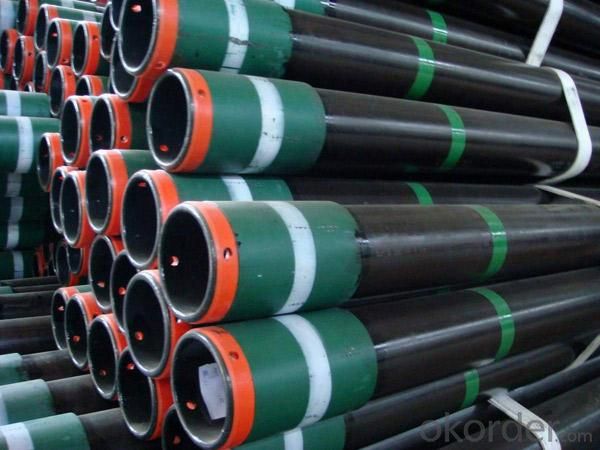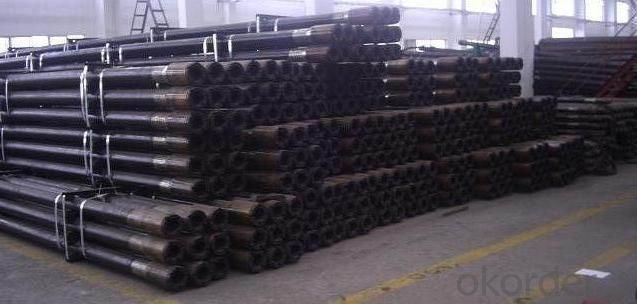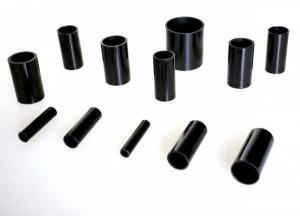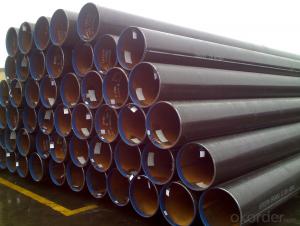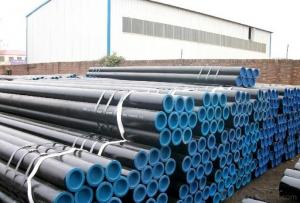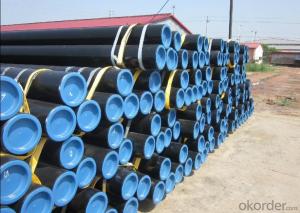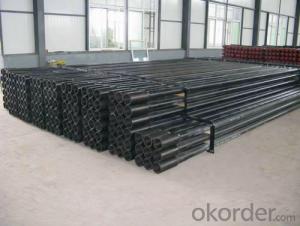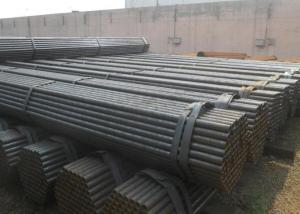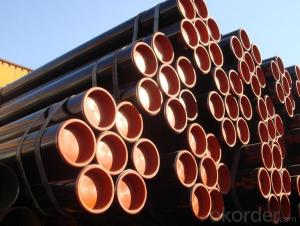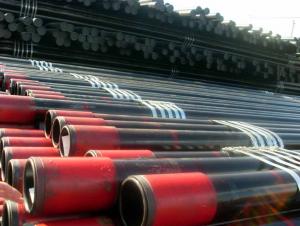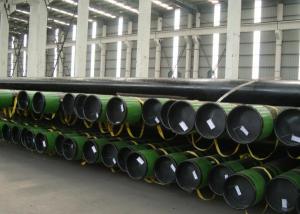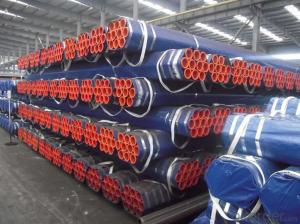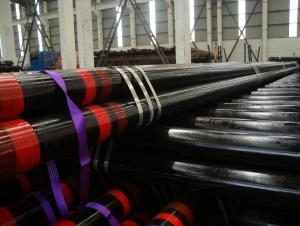API Standard Drill Pipe Casing and Tubing Oil and Gas Industry API ASTM ASME Best Quality
- Loading Port:
- China Main Port
- Payment Terms:
- TT or LC
- Min Order Qty:
- 25 m.t. m.t.
- Supply Capability:
- 5000 Tons Per Month m.t./month
OKorder Service Pledge
OKorder Financial Service
You Might Also Like
|
|
|
|
|
|
|
|
|
|
|
|
|
|
|
|
|
| Designations |
| Pipe body |
| Calculated weight |
|
|
| Upset dimensions |
|
|
|
| |||
|
|
|
|
|
|
|
| OD |
| Length of | Length of | Length of | Length of | Length end of |
| |
|
|
|
|
|
|
|
|
| ID at End |
| ||||||
| Size | Nominal | OD | WT | ID | Plain end | Upset |
| internal | internal | external | external | pipe to taper |
| ||
|
| of Pipe | upset | taper | upset | taper | fade out |
| ||||||||
|
| weight |
|
|
|
|
|
|
|
| ||||||
|
|
|
|
|
|
| +1/8 | ±1/16 | +1 1/2 | Min. | Min. | Min. | Min. | Max. |
| |
|
|
|
|
|
|
|
|
| ||||||||
|
|
|
|
|
|
|
| -1/32 | - 1/2 |
| ||||||
|
|
|
|
|
|
|
|
|
|
|
|
|
|
| ||
| in | lb/ft | in | in | in | lb/ft | lb/ft | in | in | in | in | in | in | in | in |
|
|
|
|
|
|
|
|
|
|
|
|
|
|
|
| ||
D | t | d | wpe | ew | Dou | dou | Liu | miu | Leu | meu | meu | Leu+meu |
| |||
|
|
|
| |||||||||||||
|
|
|
|
|
|
|
| 0Internal upset |
|
|
|
|
|
|
| |
|
|
|
|
|
|
|
|
|
|
|
|
|
|
|
| |
2 7/8 | 10.40 | 2.875 | 0.362 | 2.151 | 9.72 | 3.20 | 2.875 | 1 15/16 | 1 3/4 | 1 1/2 | - | - | - | - |
| |
|
|
|
|
|
|
|
|
|
|
|
|
|
|
|
|
|
|
| 9.50 | 3.500 | 0.254 | 2.992 | 8.81 | 4.40 | 3.500 | 2 1/4 | 1 3/4 | - | - | - | - | - |
|
3 1/2 |
|
|
|
|
|
|
|
|
|
|
|
|
|
|
| |
13.30 | 3.500 | 0.368 | 2.764 | 12.31 | 4.40 | 3.500 | 1 15/16 | 1 3/4 | 1 1/2 | - | - | - | - |
| ||
|
|
|
|
|
|
|
|
|
|
|
|
|
|
|
|
|
|
| 15.50 | 3.500 | 0.449 | 2.602 | 14.63 | 3.40 | 3.500 | 1 15/16 | 1 3/4 | 1 1/2 | - | - | - | - |
|
|
|
|
|
|
|
|
|
|
|
|
|
|
|
|
|
|
4 | 11.85 | 4.000 | 0.262 | 3.476 | 10.46 | 4.20 | 4.000 | 2 15/16 | 1 3/4 | - | - | - | - | - |
| |
|
|
|
|
|
|
|
|
|
|
|
|
|
|
| ||
14.00 | 4.000 | 0.330 | 3.340 | 12.93 | 4.60 | 4.250 | 2 3/4 | 1 3/4 | 2 | - | - | - | - |
| ||
|
|
| ||||||||||||||
|
|
|
|
|
|
|
|
|
|
|
|
|
|
|
| |
4 1/2 | 13.75 | 4.500 | 0.271 | 3.958 | 12.24 | 5.20 | 4.750 | 3 3/8 | 1 3/4 | - | - | - | - | - |
| |
|
|
|
|
|
|
|
|
|
|
|
|
|
|
|
| |
5 | 16.25 | 5.000 | 0.296 | 4.408 | 14.87 | 6.60 | 5.000 | 3 3/4 | 1 3/4 | - | - | - | - | - |
| |
|
|
|
|
|
|
|
|
|
|
|
|
|
|
|
|
|
|
|
|
|
|
|
|
| 0External upset |
|
|
|
|
|
|
| |
|
|
|
|
|
|
|
|
|
|
|
|
|
|
|
| |
2 3/8 | 6.65 | 2.375 | 0.280 | 1.815 | 6.26 | 1.80 | 2.656 | 1.815 | - | - | 1 1/2 | 1 1/2 | - | 4 |
| |
|
|
|
|
|
|
|
|
|
|
|
|
|
|
|
| |
2 7/8 | 10.40 | 2.875 | 0.362 | 2.151 | 9.72 | 2.40 | 3.219 | 2.151 | - | - | 1 1/2 | 1 1/2 | - | 4 |
| |
|
|
|
|
|
|
|
|
|
|
|
|
|
|
|
|
|
|
| 9.50 | 3.500 | 0.254 | 2.992 | 8.81 | 2.60 | 3.938 | 2.992 | - | - | 1 1/2 | 1 1/2 | - | 4 |
|
3 1/2 |
|
|
|
|
|
|
|
|
|
|
|
|
|
|
| |
13.30 | 3.500 | 0.368 | 2.764 | 12.31 | 4.00 | 3.938 | 2.602 | 2 1/4 | 2 | 1 1/2 | 1 1/2 | - | 4 |
| ||
|
|
|
|
|
|
|
|
|
|
|
|
|
|
|
|
|
|
| 15.50 | 3.500 | 0.449 | 2.602 | 14.63 | 2.80 | 3.938 | 2.602 | - | - | 1 1/2 | 1 1/2 | - | 4 |
|
|
|
|
|
|
|
|
|
|
|
|
|
|
|
|
|
|
4 | 11.85 | 4.000 | 0.262 | 3.476 | 10.46 | 5.00 | 4.500 | 3.476 | - | - | 1 1/2 | 1 1/2 | - | 4 |
| |
|
|
|
|
|
|
|
|
|
|
|
|
|
|
| ||
14.00 | 4.000 | 0.330 | 3.340 | 12.93 | 5.00 | 4.563 | 3.340 | - | - | 1 1/2 | 1 1/2 | - | 4 |
| ||
|
|
| ||||||||||||||
|
|
|
|
|
|
|
|
|
|
|
|
|
|
|
|
|
|
| 13.75 | 4.500 | 0.271 | 3.958 | 12.24 | 5.60 | 5.063 | 3.958 | - | - | 1 1/2 | 1 1/2 | - | 4 |
|
4 1/2 |
|
|
|
|
|
|
|
|
|
|
|
|
|
|
| |
16.60 | 4.500 | 0.337 | 3.826 | 14.98 | 5.60 | 5.063 | 3.826 | - | - | 1 1/2 | 1 1/2 | - | 4 |
| ||
|
|
|
|
|
|
|
|
|
|
|
|
|
|
|
|
|
|
| 20.00 | 4.500 | 0.430 | 3.640 | 18.69 | 5.60 | 5.063 | 3.640 | - | - | 1 1/2 | 1 1/2 | - | 4 |
|
|
|
|
|
|
|
|
|
|
|
|
|
|
|
|
|
|
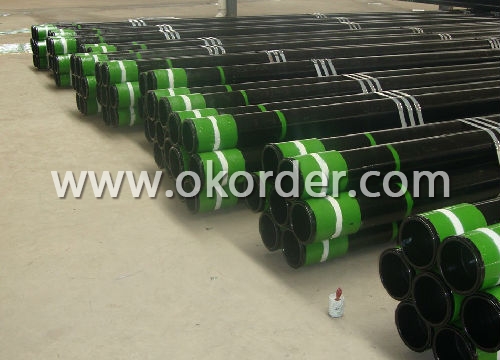
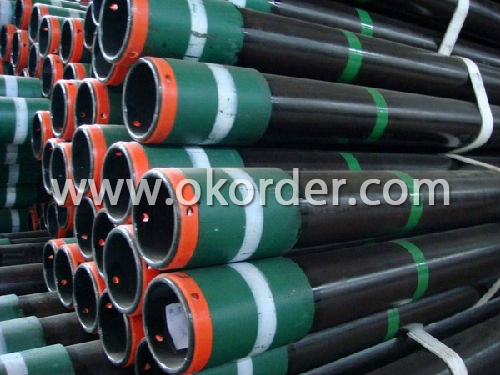
- Q: What are the different methods of repairing steel pipes?
- There are several methods for repairing steel pipes, including welding, pipe wrapping, pipe lining, and pipe bursting. Welding involves fusing the damaged sections of the pipe using heat and pressure. Pipe wrapping involves using a fiberglass or epoxy resin wrap to reinforce and seal the damaged areas. Pipe lining involves inserting a new pipe into the damaged one, creating a seamless and corrosion-resistant inner lining. Pipe bursting involves replacing the damaged pipe by using a bursting head to break it apart while simultaneously pulling a new pipe into place. The choice of method depends on the nature and extent of the damage, as well as other factors such as cost and accessibility.
- Q: How do you determine the maximum allowable stress for a steel pipe?
- Several factors need to be taken into account in order to determine the maximum stress that a steel pipe can withstand. The type of steel used in the pipe is of utmost importance, as different types have varying mechanical properties and strengths. Additionally, the dimensions and thickness of the pipe are significant factors in determining its maximum stress capacity. Generally, thicker pipes have higher stress limits compared to thinner ones. Furthermore, it is crucial to consider the operating conditions that the pipe will be exposed to. This includes the temperature, pressure, and the nature of the fluid flowing through the pipe. These conditions can greatly impact the maximum stress that the pipe can tolerate. For instance, high temperatures or corrosive fluids can weaken the steel and reduce its strength. Engineers typically rely on industry standards and codes, such as the ASME Boiler and Pressure Vessel Code and the API standards, to determine the maximum stress limit. These standards provide guidelines and formulas for calculating the maximum stress based on the material properties, dimensions, and operating conditions of the pipe. It is important to emphasize that determining the maximum stress limit is a critical step in ensuring the structural integrity and safety of the steel pipe. It requires a comprehensive understanding of the materials, design considerations, and industry standards. Therefore, it is advisable to seek guidance from experienced engineers or professionals who specialize in piping design and analysis to accurately determine the maximum stress that a steel pipe can withstand.
- Q: How are steel pipes used in the manufacturing of scaffolding?
- Steel pipes are commonly used in the manufacturing of scaffolding as they provide structural support and stability. These pipes are used to create the framework of the scaffolding structure, allowing workers to safely access and work at heights. The steel pipes are connected and secured together using couplers, providing a strong and reliable base for the scaffolding system.
- Q: What are the common applications of steel pipes in construction?
- Steel pipes are commonly used in construction for various applications such as plumbing, structural support, transportation of fluids and gases, underground drainage systems, and the construction of infrastructure like bridges and buildings.
- Q: How are steel pipes used in the automotive industry?
- Steel pipes are commonly used in the automotive industry for various applications such as exhaust systems, fuel lines, and structural components. They provide strength, durability, and resistance to corrosion, making them ideal for withstanding high temperatures and harsh conditions. Steel pipes are essential in ensuring efficient exhaust gas flow, delivering fuel to the engine, and providing structural support to enhance vehicle safety and performance.
- Q: How are steel pipes protected against ultraviolet (UV) radiation?
- Steel pipes are typically protected against ultraviolet (UV) radiation through the application of specialized coatings or paints that act as a barrier, preventing direct exposure of the steel to UV rays. These coatings are designed to withstand UV degradation, prevent corrosion, and extend the lifespan of the pipes.
- Q: What is the load-bearing capacity of steel pipes?
- The load-bearing capacity of steel pipes is influenced by a range of factors, including diameter, wall thickness, and steel grade. In general, steel pipes exhibit excellent load-bearing capacity due to their inherent strength and durability. The determination of load-bearing capacity involves utilizing engineering calculations and testing techniques. These calculations take into account factors such as the applied load, pipe dimensions, and material properties of the steel. To accurately ascertain the load-bearing capacity of specific steel pipes for a particular application, it is crucial to refer to engineering standards, guidelines, and consult with a structural engineer.
- Q: What's the difference between hot-rolled seamless steel tube and cold-rolled seamless steel tube?
- The difference between hot rolled seamless steel tube and cold rolled seamless steel tube:1) cold-rolled seamless tubes tend to be of small diameter, and hot-rolled seamless tubes are often of large diameter.2) the accuracy of cold-rolled seamless steel tube is higher than that of hot-rolled seamless steel tube, and the price is higher than that of hot-rolled seamless steel tube.
- Q: What is the difference between steel pipes and fiberglass pipes?
- The main difference between steel pipes and fiberglass pipes lies in their composition and properties. Steel pipes are made of metal and are known for their strength, durability, and resistance to high temperatures and pressure. They are commonly used in industrial settings and for transporting liquids and gases. On the other hand, fiberglass pipes are made of glass fibers embedded in a resin matrix, providing them with excellent corrosion resistance, lightweight properties, and insulation capabilities. Fiberglass pipes are often used in applications where corrosion is a concern, such as in chemical processing plants or wastewater treatment facilities.
- Q: How are steel pipes used in plumbing systems?
- Steel pipes are commonly used in plumbing systems due to their durability and strength. They are typically used for water supply lines, sewage lines, and gas lines. Steel pipes are resistant to corrosion, making them a reliable choice for long-term use. They are often used in high-pressure systems and are known for their ability to withstand extreme temperatures. Additionally, steel pipes are easily accessible and cost-effective, making them a popular choice in plumbing installations.
1. Manufacturer Overview
| Location | Wuxi, China |
| Year Established | 1991 |
| Annual Output Value | 300,000Tons |
| Main Markets | Europe; Southeast Asia; etc. |
| Company Certifications | API 5L;API 5CT;API Q1;ISO/TS29001 |
2. Manufacturer Certificates
| a) Certification Name | |
| Range | |
| Reference | |
| Validity Period |
3. Manufacturer Capability
| a) Trade Capacity | |
| Nearest Port | Wuxi; Shanghai |
| Export Percentage | 41% - 50% |
| No.of Employees in Trade Department | 3900-4000 People |
| Language Spoken: | English; Chinese; Spanish |
| b) Factory Information | |
| Factory Size: | Above 450,000 square meters |
| No. of Production Lines | Above 10 |
| Contract Manufacturing | OEM Service Offered;Design Service Offered |
| Product Price Range | Average |
Send your message to us
API Standard Drill Pipe Casing and Tubing Oil and Gas Industry API ASTM ASME Best Quality
- Loading Port:
- China Main Port
- Payment Terms:
- TT or LC
- Min Order Qty:
- 25 m.t. m.t.
- Supply Capability:
- 5000 Tons Per Month m.t./month
OKorder Service Pledge
OKorder Financial Service
Similar products
Hot products
Hot Searches
Related keywords
